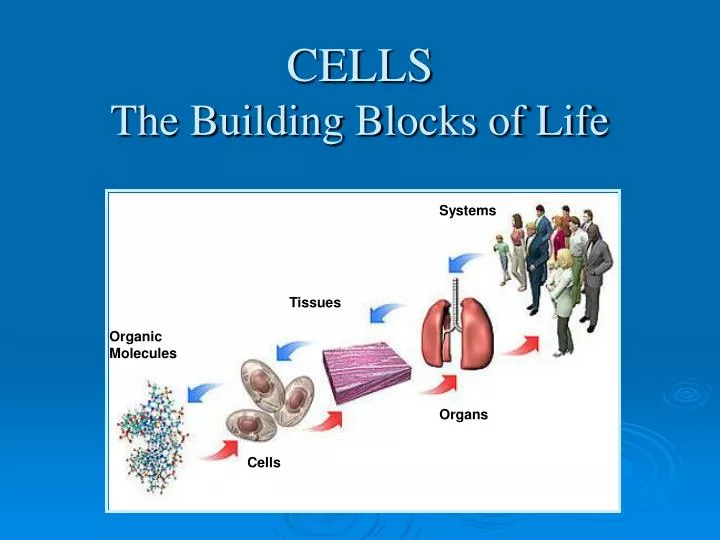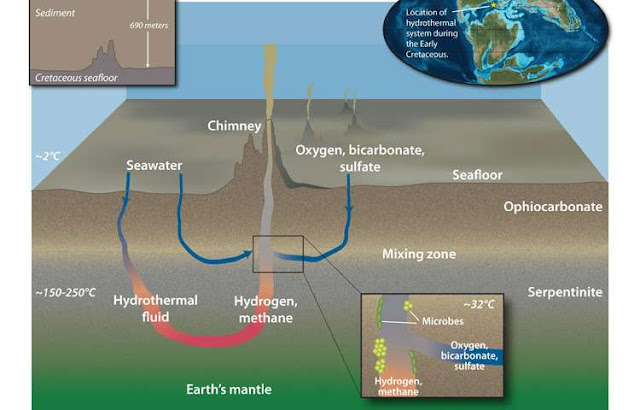Home › Forum Online Discussion › General › New evidence shows the first building blocks of life on Earth…
- This topic has 1 reply, 1 voice, and was last updated 5 years, 2 months ago by
c_howdy.
-
AuthorPosts
-
January 23, 2020 at 10:05 am #59654
c_howdy
Participant
New evidence shows the first building blocks of life on Earth may have been messier than previously thought
JANUARY 22, 2020
by Harvard University
https://phys.org/news/2020-01-evidence-blocks-life-earth-messier.html
When the Earth was born, it was a mess. Meteors and lightning storms likely bombarded the planet’s surface where nothing except lifeless chemicals could survive. How life formed in this chemical mayhem is a mystery billions of years old. Now, a new study offers evidence that the first building blocks may have matched their environment, starting out messier than previously thought.
Life is built with three major components: RNA and DNA—the genetic code that, like construction managers, program how to run and reproduce cells—and proteins, the workers that carry out their instructions. Most likely, the first cells had all three pieces. Over time, they grew and replicated, competing in Darwin’s game to create the diversity of life today: bacteria, fungi, wolves, whales and humans.
But first, RNA, DNA or proteins had to form without their partners. One common theory, known as the “RNA World” hypothesis, proposes that because RNA, unlike DNA, can self-replicate, that molecule may have come first. While recent studies discovered how the molecule’s nucleotides—the A, C, G and U that form its backbone—could have formed from chemicals available on early Earth, some scientists believe the process may not have been such a straightforward path.
“Years ago, the naive idea that pools of pure concentrated ribonucleotides might be present on the primitive Earth was mocked by Leslie Orgel as ‘the Molecular Biologist’s Dream,'” said Jack Szostak, a Nobel Prize Laureate, professor of chemistry and chemical biology and genetics at Harvard University, and an investigator at the Howard Hughes Medical Institute. “But how relatively modern homogeneous RNA could emerge from a heterogeneous mixture of different starting materials was unknown.”
In a paper published in the Journal of the American Chemical Society, Szostak and colleagues present a new model for how RNA could have emerged. Instead of a clean path, he and his team propose a Frankenstein-like beginning, with RNA growing out of a mixture of nucleotides with similar chemical structures: arabino- deoxy- and ribonucleotides (ANA, DNA, and RNA).
In the Earth’s chemical melting pot, it’s unlikely that a perfect version of RNA formed automatically. It’s far more likely that many versions of nucleotides merged to form patchwork molecules with bits of both modern RNA and DNA, as well as largely defunct genetic molecules, such as ANA. These chimeras, like the monstrous hybrid lion, eagle and serpent creatures of Greek mythology, may have been the first steps toward today’s RNA and DNA.
“Modern biology relies on relatively homogeneous building blocks to encode genetic information,” said Seohyun Kim, a postdoctoral researcher in chemistry and first author on the paper. So, if Szostak and Kim are right and Frankenstein molecules came first, why did they evolve to homogeneous RNA?
Kim put them to the test: He pitted potential primordial hybrids against modern RNA, manually copying the chimeras to imitate the process of RNA replication. Pure RNA, he found, is just better—more efficient, more precise, and faster—than its heterogeneous counterparts. In another surprising discovery, Kim found that the chimeric oligonucleotides—like ANA and DNA—could have helped RNA evolve the ability to copy itself. “Intriguingly,” he said, “some of these variant ribonucleotides have been shown to be compatible with or even beneficial for the copying of RNA templates.”
If the more efficient early version of RNA reproduced faster than its hybrid counterparts then, over time, it would out-populate its competitors. That’s what the Szostak team theorizes happened in the primordial soup: Hybrids grew into modern RNA and DNA, which then outpaced their ancestors and, eventually, took over.
“No primordial pool of pure building blocks was needed,” Szostak said. “The intrinsic chemistry of RNA copying chemistry would result, over time, in the synthesis of increasingly homogeneous bits of RNA. The reason for this, as Seohyun has so clearly shown, is that when different kinds of nucleotides compete for the copying of a template strand, it is the RNA nucleotides that always win, and it is RNA that gets synthesized, not any of the related kinds of nucleic acids.”
So far, the team has tested only a fraction of the possible variant nucleotides available on early Earth. So, like those first bits of messy RNA, their work has only just begun.
More information: Seohyun Chris Kim et al, A Model for the Emergence of RNA from a Prebiotically Plausible Mixture of Ribonucleotides, Arabinonucleotides, and 2′-Deoxynucleotides, Journal of the American Chemical Society (2020). DOI: 10.1021/jacs.9b11239
Journal information: Journal of the American Chemical Society
 March 12, 2020 at 10:58 am #59822
March 12, 2020 at 10:58 am #59822c_howdy
Participant
MARCH 12, 2020
Building blocks for life on Earth arrived much later than we thought, billion-year-old rocks show
by University of New South Wales
https://phys.org/news/2020-03-blocks-life-earth-thought-billion-year-old.html
Ancient rocks from Greenland have shown that the elements necessary for the evolution of life did not come to Earth until very late in the planet’s formation—much later than previously thought.
An international team of geologists—led by the University of Cologne and involving UNSW scientists—have published important new findings about the origin of oceans and life on Earth: they have found evidence that a large proportion of the elements that are essential to the formation of oceans and life—such as water, carbon and nitrogen—only came to Earth very late in its history.
Many scientists previously believed that these elements had already been there at the beginning of our planet’s formation. However, the geological investigations published in Nature today have shown that most of the water in fact only came to Earth when its formation was almost complete.
Volatile elements such as water originate from asteroids, the planetary building blocks that formed in the outer solar system. There has been a lot of discussion and controversy in the scientific community around when precisely these building blocks came to Earth.
Dr. Mario Fischer-Gödde from the Institute of Geology and Mineralogy at the University of Cologne, who led the work, says we are now able to narrow down the timeframe more precisely.
“The rocks we analyzed are the oldest preserved mantle rocks. They allow us to see into the early history of the Earth as if through a window.
“We compared the composition of the oldest, approximately 3.8 billion-year-old, mantle rocks from the Archean Eon with the composition of the asteroids from which they formed, and with the composition of the Earth’s mantle today.”
To understand the temporal process, the researchers determined the isotope abundances of a very rare platinum metal called ruthenium, which the Archean mantle of the Earth contained.
Like a genetic fingerprint, the rare platinum metal is an indicator for the late growth phase of the Earth.
“Platinum metals like ruthenium have an extremely high tendency to combine with iron. Therefore, when the Earth formed, ruthenium must have been completely discharged into the Earth’s metallic core,” says Professor Fischer-Gödde.
Professor Martin Van Kranendonk, the UNSW scientist who was part of the research, says the reason why this is of such interest relates directly to understanding the origins of life on Earth, how we humans came to be, and in fact, to whether we might be alone, or have neighbours in the universe.
“This is because the results show that Earth did not really become a habitable planet until relatively late in its accretionary history,” he says.
“If you combine this with the evidence for very ancient life on Earth, it reveals that life got started on our planet surprisingly quickly, within only a few hundred million years. Now this might sound like a lot of time, and it is, but it is far different from what we used to think, that life took half a billion, or even a billion years to get started.
“And this gives hope for finding life on other planets that had a shorter geological history and period of ‘warm and wet’ conditions than Earth, because if life could get started quickly here, then perhaps it got started quickly elsewhere.”
Professor Dr. Carsten Münker, also at the University of Cologne, added: “The fact that we are still finding traces of rare platinum metals in the Earth’s mantle means that we can assume they were only added after the formation of the core was completed—they were certainly the result of later collisions of the Earth with asteroids or smaller planetesimals.”
Scientists refer to the very late building blocks of Earth, which arrived through these collisions, as the ‘late veneer.”
“Our findings suggest that water and other volatile elements such as carbon and nitrogen did indeed arrive on Earth very late in the ‘late veneer’ phase,” Professor Fischer-Gödde says.
The new findings are the result of collaboration among scientists from Germany, Denmark, England, Australia and Japan. The scientists are planning further field trips to India, northwestern Australia, and Greenland to investigate more rock samples.
More information: Mario Fischer-Gödde et al. Ruthenium isotope vestige of Earth’s pre-late-veneer mantle preserved in Archaean rocks, Nature (2020). DOI: 10.1038/s41586-020-2069-3
Journal information: Nature
-
AuthorPosts
- You must be logged in to reply to this topic.
